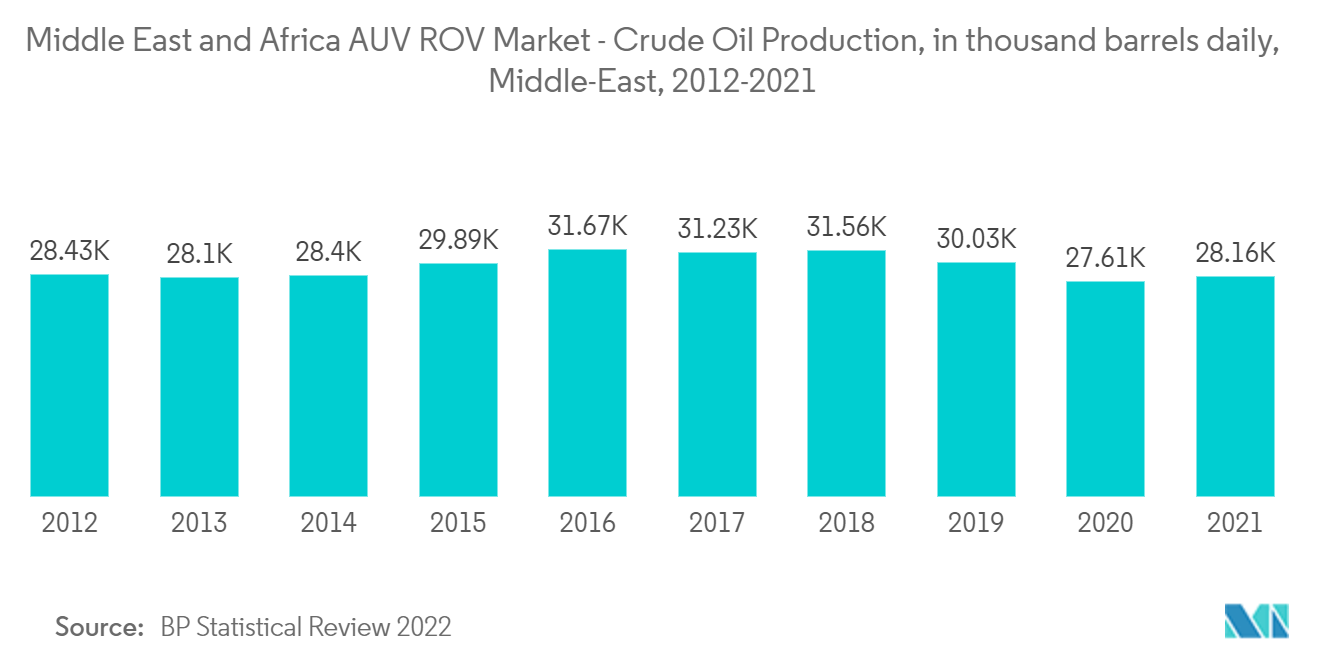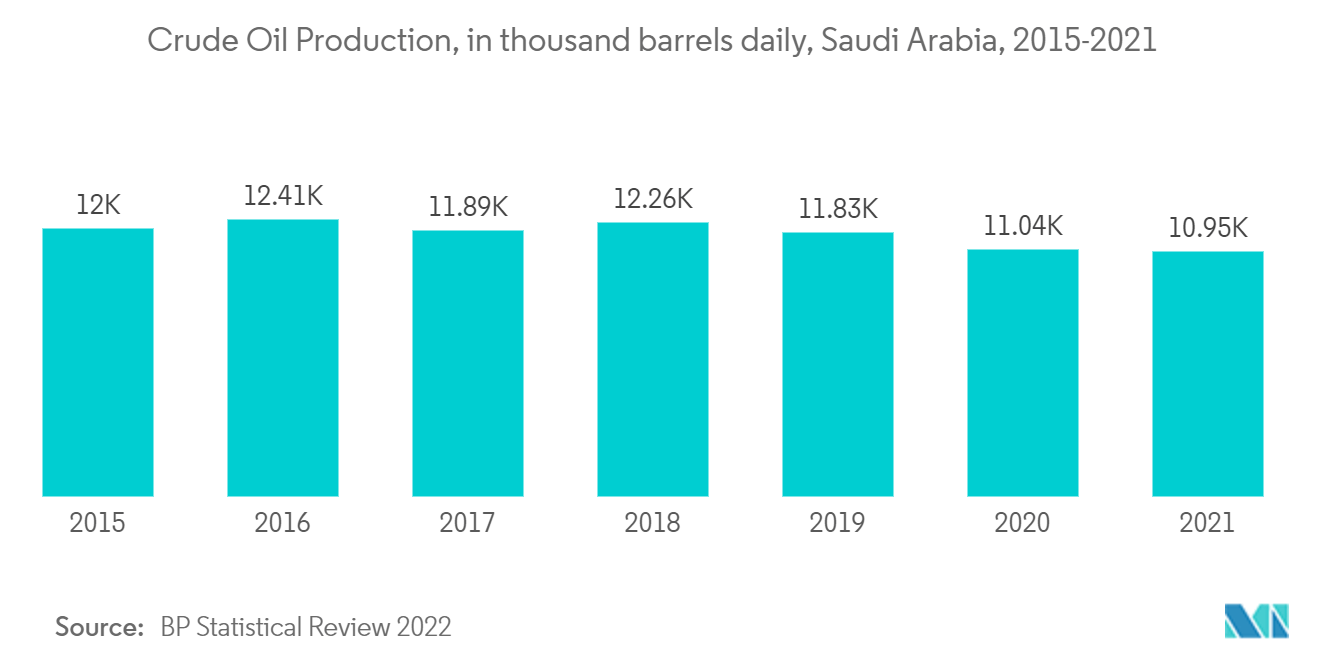Market Trends of Middle-East and Africa AUV & ROV Industry
This section covers the major market trends shaping the MEA AUV & ROV Market according to our research experts:
Oil and Gas Segment is Expected to Dominate the Market
- The Middle East and Africa are significant regions of proven oil and gas field reserves worldwide. The region's offshore reserves remain underdeveloped in Kuwait, Saudi Arabia, Iran, Qatar, Nigeria, Cameroon, and the United Arab Emirates, all of which have significant field developments in trains.
- As of 2021, the total oil production in the Middle East reached 28,156 thousand barrels daily. With the rapidly increasing global energy needs, offshore oil production has become an attractive energy source. Therefore, countries with significant regional players are focusing on exploring and producing offshore oil and gas fields.
- For instance, this year, Abu Dhabi National Oil Company (ADNOC) kicked off a bid process for engineering, procurement, construction, and installation contract for further development at its giant Lower Zakum offshore oilfield. The development of the field includes several services, such as the construction of infrastructure, subsea pipelines, and subsea systems. All these services require ROV and AUV for installation and monitoring.
- Moreover, in June 2022, Saudi's King Abdullah University of Science and Technology (KAUST) announced a new collaboration agreement with Ocean Aero, a manufacturer and service provider of ocean-going Autonomous Underwater and Surface Vehicles (AUVs). Ocean Aero and Shelf Subsea aim to bring the AUVs into Saudi Arabia, enhancing KAUST research on the Red Sea.
- Furthermore, as of 2021-2025, there are more than 77 approved upstream projects in the Middle East and 27 approved upstream projects in the African region. Most of these projects are offshore field projects requiring ROVs and AUVs for various services. This, in turn, is expected to drive the market studied during the forecast period.
- Therefore, the oil and gas segment is expected to dominate the market during the forecast period.

Saudi Arabia is Expected to Dominate the Market
- Saudi Arabia is rich in oil and gas reserves. The region has one of the most well-developed oil and gas industries, with the primary areas of focus being the vast reserves in the Persian Gulf. As drilling depths have increased over the years, the volume of technically recoverable reserves has increased significantly, which has attracted growing investments.
- ROV and AUV technologies have become increasingly affordable. Therefore, oil and gas producers in Saudi Arabia have invested in ROV and AUV services for obtaining data and carrying out routine maintenance work on subsea assets and surfaces. Despite higher upfront costs than those of the diving crews, ROVs and AUVs need less time to complete the same amount of work, reducing overall project OPEX.
- Saudi Arabia is in the process of expanding its existing oil & gas fields. Major expansion projects include the Berri field and the Marjan Oil field. The Berri field is located partly onshore and partly offshore on the east coast of Saudi Arabia. It is being expanded under the Berri Increment Program (BIP) to double its crude oil production capacity to 500,000 barrels per day by 2023. The project is scheduled to commission next year, with an estimated investment of USD 6 billion. It is expected to drive future demand for the ROV and AUV market. As of 2021, Saudi Arabia had crude oil production of about 10,954 in thousand barrels per day.
- Moreover, in December 2021, Fugro NV deployed two new autonomous environmental landers off the coast of Saudi Arabia to collect oceanographic data in deep remote areas of the Red Sea. The project aims to support Saudi Vision 2030.
- Furthermore, in September 2022, the Government of Saudi Arabia announced its plan to procure highly advanced stealth Chinese AUVs for oil and gas and defense operations.
- Therefore, owing to the above points, Saudi Arabia is expected to dominate the Middle East and Africa AUV & ROV market during the forecast period.


